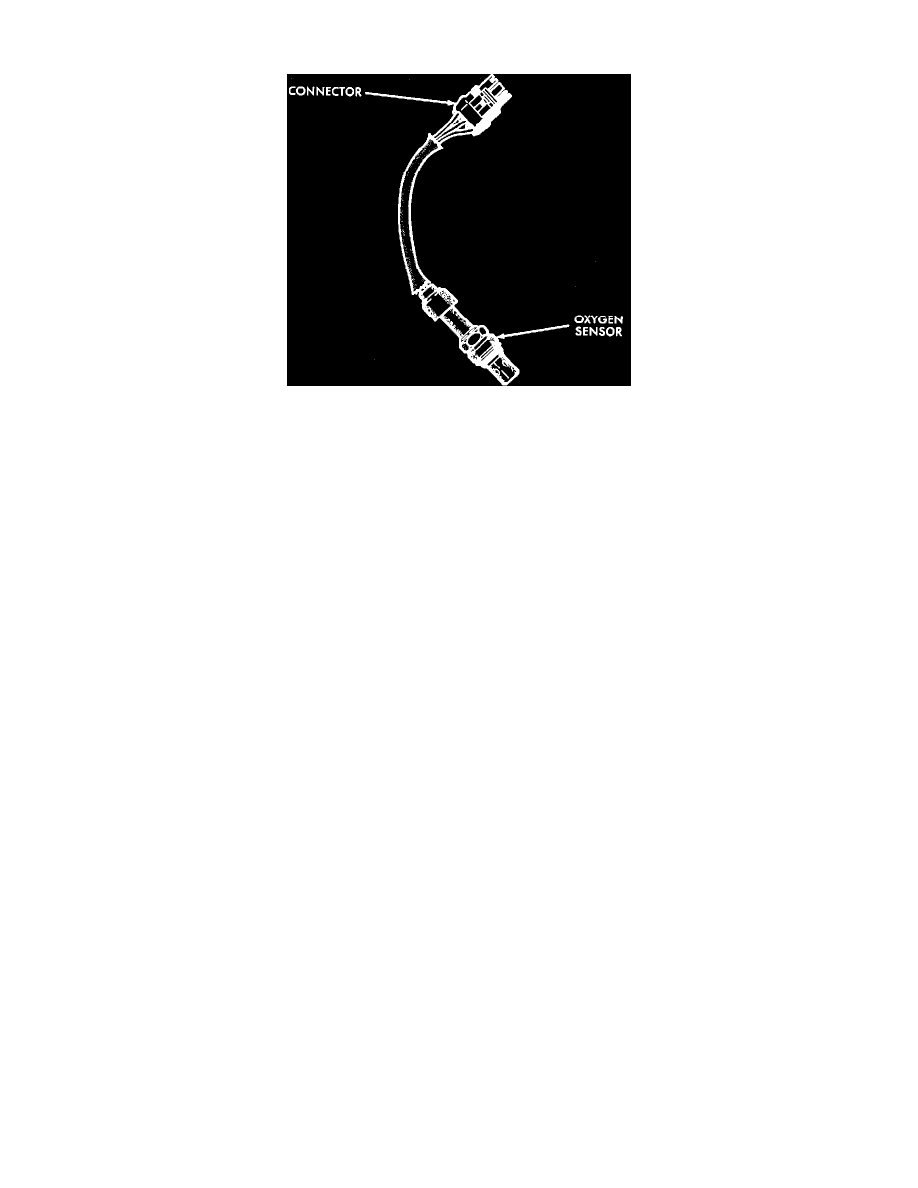Cherokee 2WD L4-150 2.5L VIN H TBI (1988)

Oxygen Sensor: Description and Operation
Oxygen Sensor Description
This sensor is used to determine the oxygen content of the exhaust gases. The oxygen sensor is basically a galvanic battery consisting of a cylindrical
electrolyte element of zirconium dioxide which is coated inside and out with platinum. The outer platinum electrode is exposed to atmosphere, while the
inner is exposed to the hot exhaust gases. A porous ceramic coating protects the platinum against damage by the exhaust gases.
The air from the atmosphere acts as one conductor of the battery, the exhaust gases act as the other, and the zirconium dioxide and platinum act as the
electrolyte. The higher the oxygen content in the exhaust, the less dissimilarity, thus yielding a low voltage output (.45 volts or less). When the oxygen
content is low (rich mixture), the greater the dissimilarity between the outside air and the exhaust gases, this dissimilarity causes a higher voltage output
(.45 to 1 volt).
The oxygen sensor's internal impedance, output voltage, and time response are all determined by its temperature, so it is very important that the oxygen
sensor be properly heated in order to function properly. The oxygen sensor is equipped with a heating element and the following is a list of its purposes:
It keeps the sensor at its proper temperature.
It heats the sensor faster so that the vehicle goes into closed loop operation faster.
It keeps the vehicle in closed loop operation during extended idle conditions.
Voltage is supplied to the oxygen sensor heater via the ignition switch and the ground circuit for the oxygen sensor is shared with the ignition module.
The ECU uses the voltage value from the oxygen sensor and other input signals to adjust the air/fuel mixture and to determine the proper time for
switching from open to closed loop operation.
